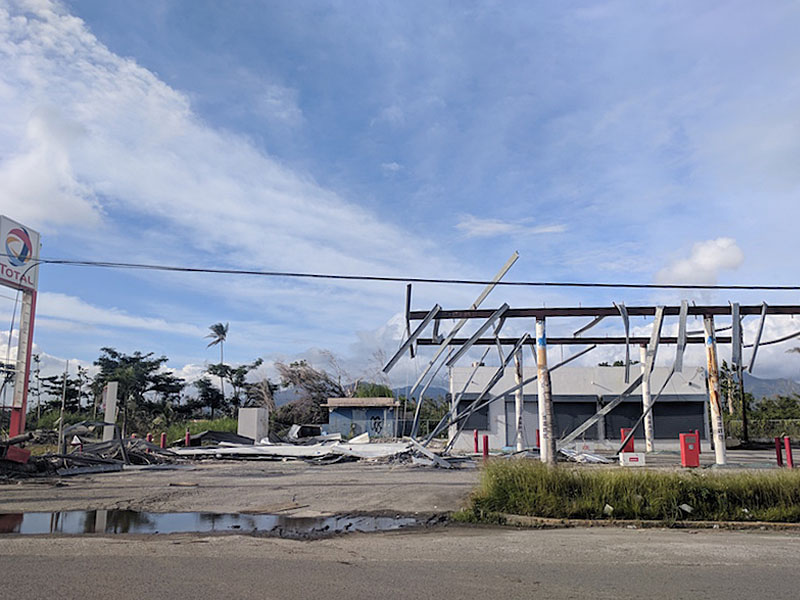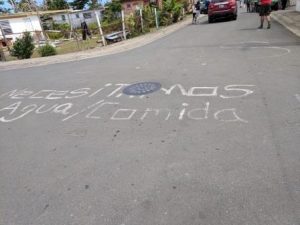By David E. Hubler
Contributor, EDM Digest
Monkey Island lies just a half mile off the east coast of Puerto Rico. This tiny speck of land has the dubious distinction of being the spot where Hurricane Maria made landfall on American soil on September 20, 2017.
For 16 hours, the island and the nearby area were slammed by storm surges and 160 mile-per-hour winds.
Much of Monkey Island’s vegetation and its few buildings were destroyed, along with its newly renovated pier and cisterns that provided fresh drinking water for the scientists and the monkeys. Nevertheless, the approximately 1,700 rhesus macaque monkeys on the island survived.

They are the descendants of the 409 monkeys that American primatologist Clarence Ray Carpenter released on the island in 1938 to start a population for behavioral studies. The primates have thrived there for 80 years.
Monkey Island a Crucial Resource for Primatologists and Other Scientists
Officially named Cayo Santiago, the 35-acre island has been a crucial resource for primatologists and other scientists. Monkey Island has provided scientists the chance to study primate behavior, cognition and genetics, as well as the monkeys’ eating, mating and child-rearing habits.
Dr. Jennifer Cramer, a primatologist and Program Director of Sociology, Anthropology and Women’s Studies at American Public University, spent the summers of 2005 and 2006 on Monkey Island working on her master’s thesis.
The tiny enclave “has been a really important study site for research in mammals and is unique in the world,” she explained. Because the monkeys roam free, scientists can observe their behavior in natural surroundings.
“We know all the monkeys’ identities. We know their pedigrees, and we have a lot of basic biological and behavioral information on them that we can follow across the decades,” Dr. Cramer said.
As a student, Dr. Cramer studied the female monkeys’ coloration. “Their skin gets very colorful in the mating season,” she explained. One of her less desirable tasks was collecting monkey fecal matter for study.
Raising Funds to Rebuild Monkey Island after 2017 Hurricane
Within days of Hurricane Maria’s near-total destruction of Puerto Rico’s infrastructure, former and current researchers started organizing to help the staff at the field station and the local community. A Cayo Santiago Facebook page and a GoFundMe page were set up to call attention to Monkey Island’s urgent needs and to raise funds for the cleanup.
Soon after, Dr. Cramer and many of her colleagues received an email from Dr. Steve Schapiro, treasurer and vice president of membership for the International Primatological Society.
His email explained the urgent need to rebuild the Monkey Island facilities and to help the island’s resident staff whose homes on the nearby mainland town of Punta Santiago were largely destroyed as well.
Dr. Schapiro also wanted to put together a group of primatologists and other scientists who would be willing to pay their own way to Cayo Santiago. They would serve as volunteers, restoring and rehabilitating the field station and community.

Many primatologists and their families promptly signed on. The final group consisted of about 40 volunteers, including a physician, a veterinarian, two plumbers and a documentary filmmaker.
Their goal was two-fold: First, to help Punta Santiago, whose residents hosted the Monkey Island scientists for about 70 years. “They are the people that help us, that feed us and house us,” Dr. Cramer explained.
The second goal was to assess the damage on Monkey Island and begin repairs.

Dr. Cramer was able to make the humanitarian trip to Puerto Rico in December 2017, as well as a second visit this past April, because “I can work from anywhere.” she said. “I was able to work on the trip and teach classes online. That was really, really great because with a more traditional [brick and mortar] position, I wouldn’t have been able to do that so easily.”

Rebuilding Punta Santiago after Maria’s Widespread Devastation
The volunteers arrived in Puerto Rico soon after Christmas. The widespread devastation forced them to stay in San Juan and travel to the island each day.
“A lot of people lost everything in Punta Santiago,” Dr. Cramer said. She and her colleagues helped rebuild their homes.
“We replaced floors. We removed appliances that were no longer working. We put up roofs, we put up walls, we did painting — a whole bunch of different tasks that were needed,” she said.
Restoring Facilities on Monkey Island
On Monkey Island, the volunteers found the field station, its equipment and vehicles destroyed. They cleared debris and began repairs to the field station.
Dr. Cramer recalled that the field station had a small walled-off area where the researchers “could eat without the monkeys trying to take their lunch from them,” she said. That too was gone.
Recovery Work Still in Progress
In April, when Dr. Cramer returned with a second group of volunteers, Punta Santiago’s power had recently returned to about half the town.
“They still are [living] on bottled and boiled water,” she said of the town’s residents. “They don’t have running water coming out of their faucets safe for drinking water.” Monkey Island, Punta Santiago and Puerto Rico itself are slowly returning to normal. “They’re starting to put those pieces back together, but it will take a long time and resources to get that infrastructure rebuilt,” Dr. Cramer said.
A third team of volunteers is scheduled to visit Monkey Island from June 29 through July 8. Dr. Cramer won’t be able to go on that trip, so her husband Brad will go in her place. Numerous organizations are involved in fund-raising efforts to rebuild the area, including the International Primatological Society’s Project Monkey Island and the Caribbean Primate Research Center of the University of Puerto Rico. All donations are welcome.
Comments are closed.